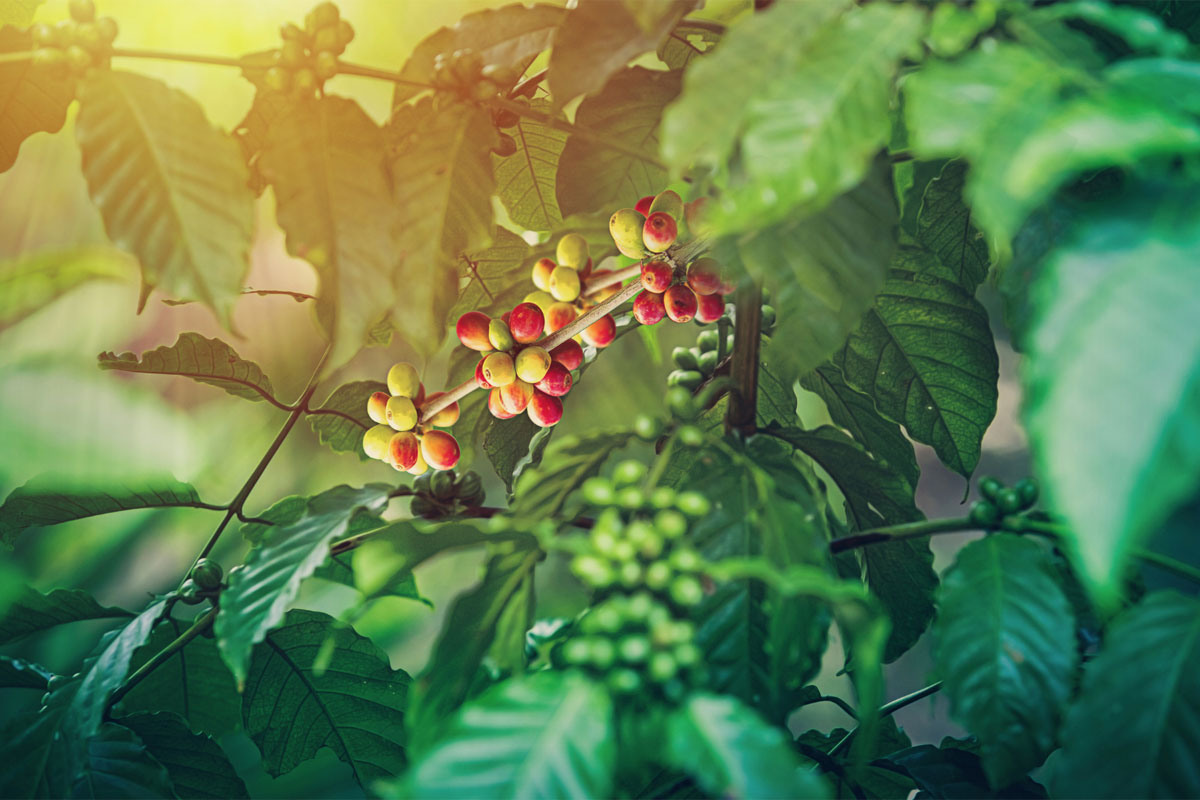
Arabica coffee, scientifically referred to as; 'Coffea arabica’, is a highly prized commodity. Native to the highlands of Ethiopia, and now also very successfully cultivated in India, Arabica features heavily in the world history of coffee. What distinguishes Arabica coffee from non-distinct species are the methods employed to cultivate and harvest Arabica Cherry Coffee Beans.
When we refer to Natural Arabica Cherry Coffee Beans, the term "cherry" describes the exquisite small fruit which envelops the coffee beans as they mature. Encased within each cherry are the seeds, which we know as the coffee beans themselves.
The cherry itself is very small and can be found on the branches of Arabica Cherry Coffee plants. As cherries begin their ripening process, they morph between greens into vivid reds, and it’s at this point that coffee growers know the moment of harvesting is upon them.
Taking a closer look at the Cherry:
Skin (Exocarp) - The Exocarp is the outermost layer of coffee cherry which becomes very delicate and soft when the fruit reaches maturity.
Pulp (Mesocarp) - Beneath the surface of the skin lies the juicy, succulent pulp, brimming with natural sweetness. The coffee cherry's distinctive fruity flavour comes from the pulp.
Mucilage - The mucilage describes a sticky substance which covers the coffee beans and is a crucial factor in defining the eventual flavor of Natural Arabica Cherry Coffee Beans.
Silver Skin (Endocarp) - The silver skin refers to a sheath which shrouds the beans. During the roasting process this layer is delicately removed.
Parchment (Pergamino) - Once the mucilage has been removed (either by hand or by machine), the beans are given a protective layer of parchment over them which keeps them in pristine condition and serves to preserve their flavor.
With washed Arabica Cherry Coffee Beans, often referred to as "wet-processed" Arabica Cherry Coffee Beans, the beans undergo a meticulously controlled process which removes the cherry's outer layers before the drying and roasting of the beans.
Alternatively, Natural Arabica Cherry Coffee Beans, also called "dry-processed" Arabica Cherry Coffee Beans are allowed to dry naturally as this drying method imparts additional flavor to the eventual coffee product.
Here's what the natural process looks like:
-
Drying: After harvesting, the entire coffee cherry including skin, pulp, and the beans are spread out to dry in natural sunlight. This process naturally takes longer than washing coffee beans.
-
Shrinkage: As the cherries dry, the skin and pulp shrink, enveloping the beans. This allows the sugars from the cherry to infuse the beans, giving natural coffee its characteristic fruitiness.
-
Hulling & Cleaning: Once fully dried, the dried cherry layers are mechanically removed, revealing the beans inside.
The primary distinction between washed and natural coffee beans lies in the processing method and the flavors imparted in them. Washed beans typically have cleaner, brighter, but slightly more acidic profiles, often highlighting the nuanced characteristics of the region in which they were grown.
On the other hand, natural beans are known for their fuller bodied, punchier flavors, and are often described as having more intense fruity notes. This is because the cherry is allowed to have extended contact with the bean as it dries naturally.
In a nutshell, whether you choose washed or Natural Arabica Cherry Coffee Beans will depend on the flavor profile you require. Washed beans tend towards a cleaner and more balanced taste, whilst natural beans offer a bolder, fruit-centered profile.
